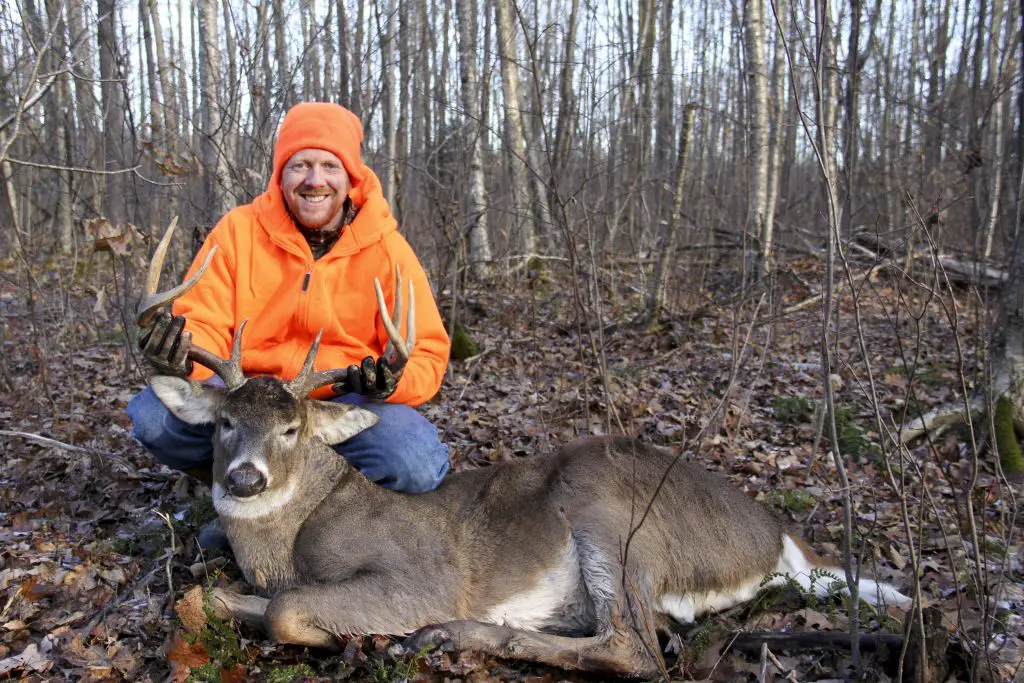Last Updated on May 13, 2023 by
As a born and bred Midwesterner, hunting was a huge part of my life. I remember growing up going hunting with my father. To this day, the two of us can’t wait for autumn. Hunting a whitetail and having that trophy is a fantastic experience. It is worth it even during the brutal Iowa cold. As a kid, I loved crossbows. I still love the ease that comes with them. They are sometimes heavy, but a favorite for whitetail hunting. There are a lot of people who will prefer compound bows, of course. However, that’s an old debate.

I like spending a considerable amount of time selecting the right broadhead. Over the years, most people I know, or the hunting masses, made me a little biased against Grim Reapers. I can now say, I stand corrected. They have great characteristics which have been proven successful, in my experience. The gaping holes they create leave great blood trails. My favourite so far has been the Grim Reaper X-Bow Mech Broadheads. I was hesitant at first, but it broke right through the off-shoulder, and the deer made less than 35 yards. Gear is absolutely pretty essential when you’re hunting. Seasoned hunter favour specialized equipment. Hunting is a gear-intensive sport, after all. This makes broadheads even more challenging to choose.
When I’m choosing a broadhead, accuracy and strength are fundamental. After testing my fair share of broadheads, Grim Reaper X-Bow Mech Broadheads have proved to be the most aerodynamic, which ensures anexcellent entry and exit wound. They would shoot field points out to 100 yards. The blades are aligned to the pinpoint of the main ones. The flawless design gives them the upper hand over others. They are also designed to cut on contact. With a razor-sharp tip and thick blades, they can be used many times. Again, the attention to detail is why they are advantaged.
What Is The Best Broadhead to Use For Deer Hunting?
Durability and dependability are essential to consider before selecting any broadhead. Below, I have listed those who are known to have these features. The Rage Hypodermic broadhead is a rear-deploying mechanical broadhead. It is a good option for novices. These chisel-tips fly like field points. The blades are closed together, which means that they cause less friction. As a result, one can expect cut on contact because of the sharpness. If you have a medium draw-weight bow, this is perfect. The 1.5-inch diameter will create a wide entry and exit wounds. This broadheads are designed for quick penetration. .
Next up, it is the WASP Jak-Hammer SST. This broadhead has a front-deploying design perfect for Whitetails. Fret not, and they are suitable for the larger game as well. The trocar tip on the front end will cut on contact. The sharpness will ensure a clear pass, and you will have your blood trail. The material makes this very durable as well. The stainless steel will power through the air and cut a medium-sized wound. The reliability of these broadheads depends on how you maintain them. Keep them sharp, and they will last you a long time. This is a 100-grain broadhead. They work well with compound bows, but I prefer 125-grain heads on my crossbow.
Among many Midwesterners, G5 Strikers have been popular options. If you’re hunting for deer, these will give you nice clear pass shots. These blades can be replaced easily. The better you maintain them, the more seasons they will last. They have the same cut on contact design as the Hammer. However, they are sharper than chisel points. This makes them highly dependable.

What Grain Of Broadhead Should I Use?
If you’re new to bowhunting, you’re probably wondering what grain of a broadhead you should use. The debate between 100 grain, and 125 grain or 150 grain, is a popular one. People opt for 100 grains for the sake of speed. The general rule is, using 100 grains for lightweight shafts, and 125 for heavier ones. A lot of bowhunters consider bows more efficient with more weight. This is anything above 100 grain. The increase from 100 to 125 grain will give you an increased cut size. The latter provides more FOC weight and is stable against wind. This is generally speaking. For hunting deer, the 100 grain is favourite for many. It is famous for a good reason too. There are a lot of variables to consider when you’re deciding on this—all the way from shooting distance to arrow weight.
Most people still stick to 100 grains and for a good reason. Most gear is designed for 100 grains. They are also right in the middle of 85 grains and 125 grains. This middle ground is what helps create more balance. The purpose of grain is to help you shoot better. If you choose a 300 grain for a carbon arrow, it will do the opposite. This is why it’s important to consider the ratio of your arrow with your broadhead.
Can a Field Tip Kill a Deer?

If you’ve decided on hunting Whitetails, you might be curious about what else you can use to hunt. Broadheads should be your go-to, but let’s consider something different. Can you kill a deer with a field tip? Many US states have strict regulations against it. By using a field tip, you will be forcing yourself to track for a longer time. Field tips are not designed to kill after all. They are suitable for target shooting, but not made to kill. You will wound it, and will most likely not find it again. Your best bet is still broadheads. They will ensure clear passes and much more ethical. It’s not a good option to try out, as tempting as it sounds. To have both a successful hunting experience and a peaceful state of mind after shooting an animal, investing in quality broadheads is a better idea. Afterall, hunters are humane.

